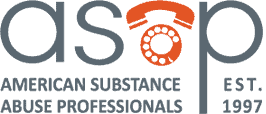By: Centers for Disease Control
Substance Use and Work: An Overview
Key points
- Substance use and its impacts can affect workers and workplaces.
- Work-related injury and working conditions can increase risks for harmful substance use.
- Understanding how they relate can help employers and managers prevent substance use and support their employees with substance use disorders (SUDs).
Why it’s important
The drug overdose epidemic is occurring in and impacting workplaces. Workplace deaths due to unintentional overdose from the nonmedical use of drugs increased by almost 500% from 2012 to 2020.
Some industries and occupations see higher rates of SUDs and drug-related deaths. This occurs among those with more difficult or dangerous work and safety-sensitive positions. The construction and extraction occupation groups experience some of the highest drug overdose death rates. The fishing, hunting, and trapping industries also experience proportionally higher drug overdose death rates.
Employers can play a critical role in:
- Preventing substance use disorders and drug-related deaths.
- Helping workers access treatment and maintain recovery from SUD.
Fast facts
An estimated 46 million Americans aged 18 or older experienced a substance use disorder in 2022. Nearly two-thirds of those people (30.1 million) were employed.
1 of every 22 deaths in the US among persons age 15-74 was attributable to unintentional overdose involving opioids in 2021. Provisional data suggests that approximately 110,000 people died of a drug overdose in 2022.
Drug overdose deaths involving synthetic opioids, cocaine, and psychostimulants also continue to rise.
Recommendations
Recognize that job-related factors can have an important impact on the well-being of workers, their families, and their communities. Consider using a Total Worker Health® approach to substance use challenges in the workplace.
Consider starting a Workplace-Supported Recovery Program to:
- Prevent substance use.
- Encourage and facilitate treatment access.
- Support workers in recovery.
_____
“Substance Use and Work: An Overview.” Centers for Disease Control and Prevention National Institute for Occupational Safety and Health, March 21, 2024, https://www.cdc.gov/niosh/substance-use/about/index.html





